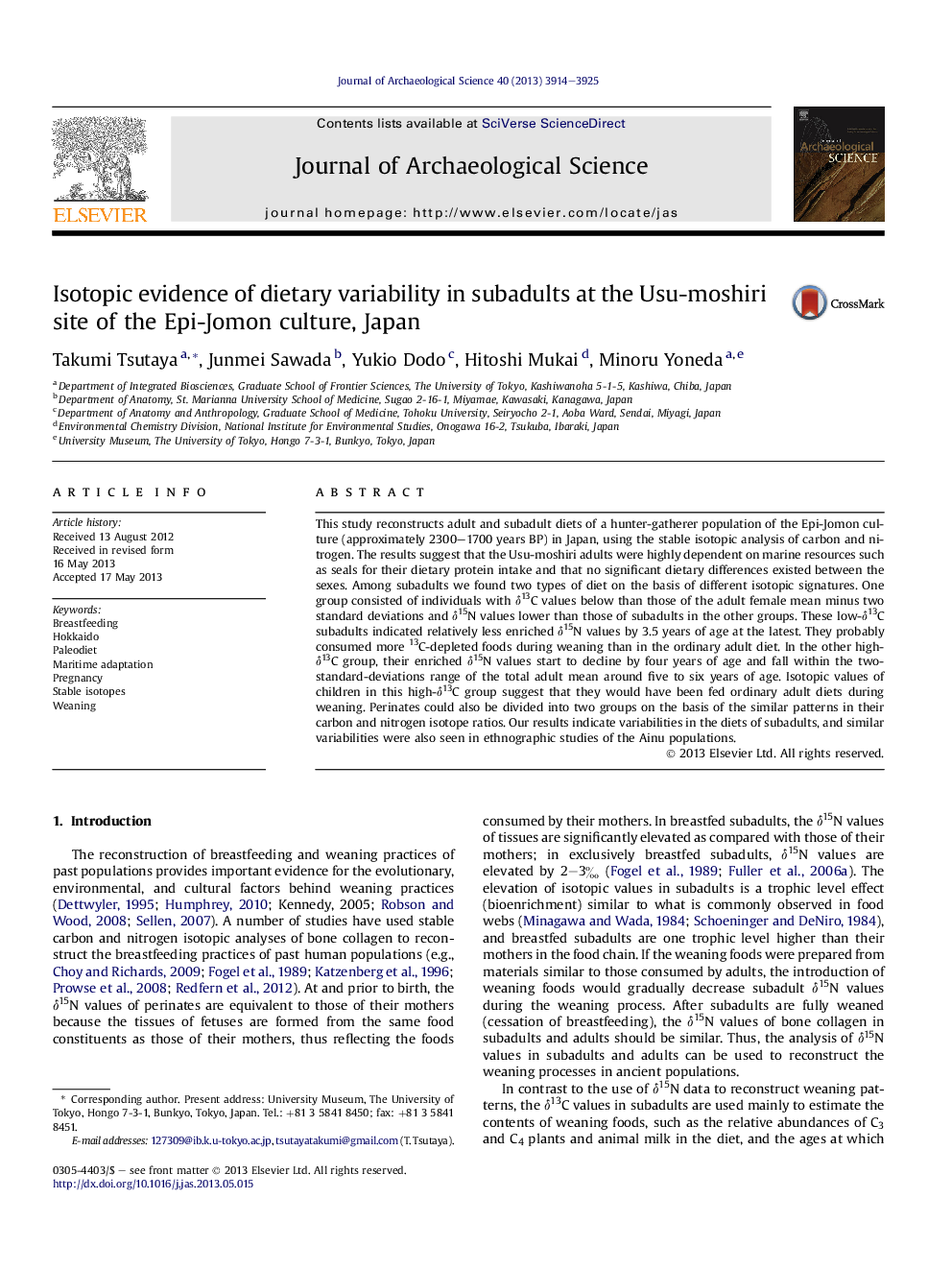| Article ID | Journal | Published Year | Pages | File Type |
|---|---|---|---|---|
| 10498877 | Journal of Archaeological Science | 2013 | 12 Pages |
Abstract
This study reconstructs adult and subadult diets of a hunter-gatherer population of the Epi-Jomon culture (approximately 2300-1700 years BP) in Japan, using the stable isotopic analysis of carbon and nitrogen. The results suggest that the Usu-moshiri adults were highly dependent on marine resources such as seals for their dietary protein intake and that no significant dietary differences existed between the sexes. Among subadults we found two types of diet on the basis of different isotopic signatures. One group consisted of individuals with δ13C values below than those of the adult female mean minus two standard deviations and δ15N values lower than those of subadults in the other groups. These low-δ13C subadults indicated relatively less enriched δ15N values by 3.5 years of age at the latest. They probably consumed more 13C-depleted foods during weaning than in the ordinary adult diet. In the other high-δ13C group, their enriched δ15N values start to decline by four years of age and fall within the two-standard-deviations range of the total adult mean around five to six years of age. Isotopic values of children in this high-δ13C group suggest that they would have been fed ordinary adult diets during weaning. Perinates could also be divided into two groups on the basis of the similar patterns in their carbon and nitrogen isotope ratios. Our results indicate variabilities in the diets of subadults, and similar variabilities were also seen in ethnographic studies of the Ainu populations.
Related Topics
Physical Sciences and Engineering
Materials Science
Materials Science (General)
Authors
Takumi Tsutaya, Junmei Sawada, Yukio Dodo, Hitoshi Mukai, Minoru Yoneda,
